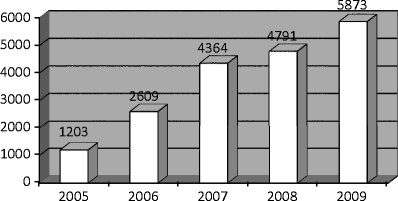1. Cholera
36. Creutzfeldt–Jakob disease
2. Typhoid fever
37. Rabies-lyssa
3. Other salmonelloses
38. Tick borne viral encephalitis
4. Shigellosis
39. Enteroviral meningitis
5. Campylobacter enteritis
40. Yellow fever
6. Yersinia enterocolitica enteritis
41. Lassa fever
7. Other bacterial intestinal infections
42. Crimean-Congo fever
8. Staphylococcal food intoxication
43. Marburg hemorrhagic fever
9. Botulism
44. Ebola hemorrhagic fever
10. Other bacterial food poisoning
45. Hantavirus hemorrhagic fever with renal syndrome
11. Amebiasis
46. Chickenpox
12. Lambliasis
47. Smallpox
13. Cryptosporidiosis
48. Morbilli
14. Infectious diarrhea and gastroenteritis
49. Rubeola
15. Tuberculosis
50. Congenital rubeola syndrome
16. Plague
51. Acute hepatitis A
17. Tularemia
52. Acute hepatitis B
18. Anthrax
53. Acute hepatitis C
19. Brucellosis
54. Acute hepatitis E
20. Leptospirosis
55. Chronic hepatitis B,C
21. Listeriosis
56. Unspecified viral hepatitis
22. Tetanus
57. AIDS
23. Diphtheria
58. Parotitis
24. Pertussis
59. Infectious mononucleosis
25. Scarlet fever
60. Malaria
26. Meningococcal infection
61. Leishmaniasis
27. Septicemia
62. Toxoplasmosis
28. Legionellosis
63. Echinococcosis
29. Syphilis
64. Trichinellosis
30. Gonococcal infection
65. Scabies
31. Chlamydia sexually transmitted disease
66. Haemophilus influenza
32. Lyme disease
67. Bacterial meningitis
33. Psittacosis
68. Streptococcal pharyngitis and tonsillitis
34. Q fever
69. Influenza
35. Poliomyelitis
70. Viral and bacterial pneumonia.
During 2009, there were 431,666 cases of infectious diseases in Serbia, which is a 22% increase compared to the year 2008. This is the largest number of cases of infectious diseases in the period 2005–2009 after an increasing 5-year trend (Fig. 16.1). This increase is mainly due to the 2009 pandemic influenza outbreak and other respiratory infections.


Fig. 16.1
Incidence of infectious diseases (per 100,000 inhabitants) in Serbia, 2005–2009 (Source: Knezevic T (ed) (2009), Health Statistical Yearbook of the Republic of Serbia, Institute of Public Health “Dr Milan Jovanovic-Batut”, Belgrade: Elit medica)
The most common infectious diseases in Serbia according to the incidence rate during 2005–2009, were: (1) streptococcal pharyngitis, (2) streptococcal tonsillitis, (3) chickenpox, (4) influenza, (5) pneumonia, (6) infectious diarrheal diseases, (7) other bacterial intestinal infections, (8) scabies, (9) scarlet fever, (10) mononucleosis, (11) bacterial food poisoning, (12) salmonellosis, (13) Chlamydia sexually transmitted disease, (14) tuberculosis, and (15) Lyme disease (Table 16.1).
Table 16.1
The most common infectious diseases in Serbia, 2005–2009 (incidence rate per 100,000 inhabitants (rank)) (Source: Knezevic T (ed.) Health Statistical Yearbooks of the Republic of Serbia 2005–2009, Institute of Public Health “Dr Milan Jovanovic-Batut”, Belgrade: Elit medica)
Disease | 2005 | 2006 | 2007 | 2008 | 2009 |
|---|---|---|---|---|---|
Streptococcal pharyngitis | 21 (11) | 580 (2) | 1165 (1) | 1492 (1) | 1941 (1) |
Streptococcal tonsillitis | 101 (2) | 604 (1) | 922 (2) | 927 (3) | 1143 (2) |
Influenza | 16 (12) | 124 (6) | 756 (3) | 936 (2) | 1604 (3) |
Chickenpox | 529 (1) | 513 (3) | 664 (4) | 582 (4) | 498 (4) |
Pneumonia | 46 (6) | 174 (4) | 227 (5) | 250 (5) | 212 (5) |
Infectious diarrheal diseases | 82 (3) | 159 (5) | 135 (6) | 173 (6) | 117 (6) |
Scabies | 48 (5) | 61 (8) | 65 (8) | 59 (8) | 54 (7) |
Other bacterial intestinal infections
Stay updated, free articles. Join our Telegram channel
Full access? Get Clinical Tree
 Get Clinical Tree app for offline access
Get Clinical Tree app for offline access

|